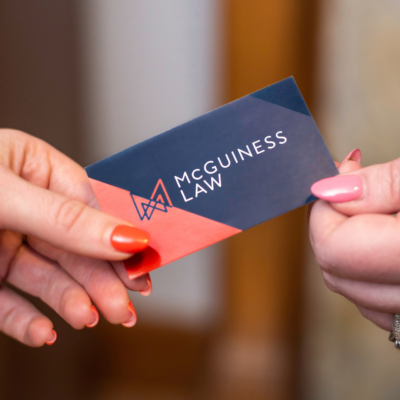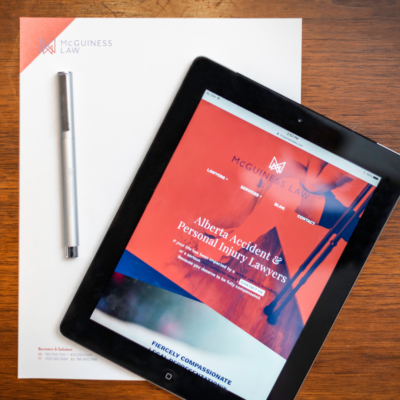Alberta Transportation reported in their Alberta Traffic Collision Statistics report 142,596 motor vehicle accidents in 2018 (most recent statistics). In addition, they shared that the highest number of fatal collisions occurred in June, August, and October.
Motor vehicle accidents can be a life-changing event for so many Albertans, some more serious than others. But all accidents have an impact on a person’s emotional, physical, and psychological health.
Do you need a personal injury lawyer?
We always suggest speaking with an experienced Personal Injury Lawyer in Alberta if you are ever involved in an accident. This doesn’t mean you have to work with that person or even hire a lawyer. But, they can provide you with the right kind of guidance for your unique case. free consultation to help guide Albertans on how to best look out for themselves in these situations and maximize their minor injury claim.

Why do we do this?
Because we know your insurance company does not have your best interest in mind. Click here to read our blog post on how you can maximize the minor injury cap in Alberta, and call 780-900-7941 for a free consultation today.
Automobile Accident Checklist
To help, we have also created a checklist below, so you know what to do immediately after a motor vehicle accident. All while ensuring you have the proper evidence to support your claim.
1. Stop: This may seem obvious, but unfortunately, many Albertans still flee the scene of a car accident. Not doing so could result in demerit points or criminal prosecution
2. Call an Ambulance: If anyone is seriously injured, make sure to call an ambulance.
3. Move to Safety: Your safety is the priority at this time. Move vehicles and passengers away from traffic only when safe to do so and as long as there are no severe injuries. If you suspect the other person is a drunk driver, do not allow them to move their vehicle.
In addition, avoid standing between two vehicles or in front of/behind a car to inspect the damage. Keep other drivers safe by putting on your hazard lights or cones until police arrive.
4. Collect Information + Contact Details of Witnesses: Take pictures of the scene and any damage to the vehicle (interior and exterior, if possible) for evidence. In addition, you will want to collect the following information from the other driver as well as yourself:
Your Information:
- Drivers Name
- List Damage to vehicle and location of the damage
- Is the vehicle drivable?
- List number of passengers and anyone that is injured.
- List injuries of passengers and self.
Other Driver’s Information:
- Drivers Name
- Driver’s Address
- Driver’s Contact Information (Phone + Email)
- List Damage to vehicle and location of the damage
- Is the vehicle drivable?
- Owner of Vehicle Name (if different from driver)
Other Driver’s Insurance Details:
- Owner’s Insurance Company Name
- Insurance Broker or Agent
- Contact Information (Phone Number and Email)
- Insurance Policy Number
- Policy Expiry Date
Other Driver’s Vehicle Damage
- List Damage to vehicle and location of the damage
- Is the vehicle drivable?
- List number of passengers and anyone that is injured.
- List injuries of passengers and driver.
Description of Collision:
- Date
- Time
- Location (address)
- Estimated speed of each vehicle
- Weather conditions (foggy, rainy, snowing, etc.)
- Road conditions (icy, wet, debris, clear, etc.)
- Light conditions (dawn, dusk, dark, day)
- Describe collision
Witnesses:
- Name
- Contact Information (phone number and email)
5. Report to Police:
Contacting the police is a good idea when:
- Anyone is injured.
- Any of the vehicles are not driveable.
- Damage to a vehicle exceeds $2,000. In this situation, you will be required to file a Collision Report Form. Failure to do so could result in demerit points or a fine.
- Any driver does not have a driver’s license or proof of insurance.
6. Contact Your Insurer: As soon as possible, advise your insurer of the details of the collision. They will also want to know about any injuries and damages to vehicles or properties. We suggest confirming what is included in your coverage and request the forms required to access coverage.
Remember: Insurance companies determine liability, not the police.
7. Contact an Experienced Personal Injury Lawyer: Speaking to a personal injury lawyer can help you determine if you are entitled to a claim, as well as guide you on the necessary next steps to take.

Tip: You are entitled to damages for pain and suffering, loss of enjoyment of life, lost wages, out-of-pocket expenses, and the cost of any future care.
At McGuiness Law, we provide free consultations and advise you about what to expect when involved in a motor vehicle case. Our team is dedicated to helping guide you through what can feel like an overwhelming process while ensuring you feel supported and receive the appropriate compensation for your injuries.
Contact our team today by calling 780-900-7941.